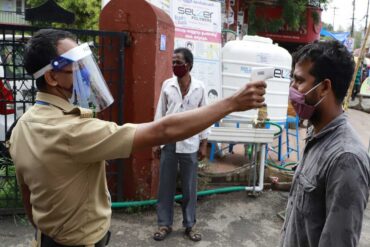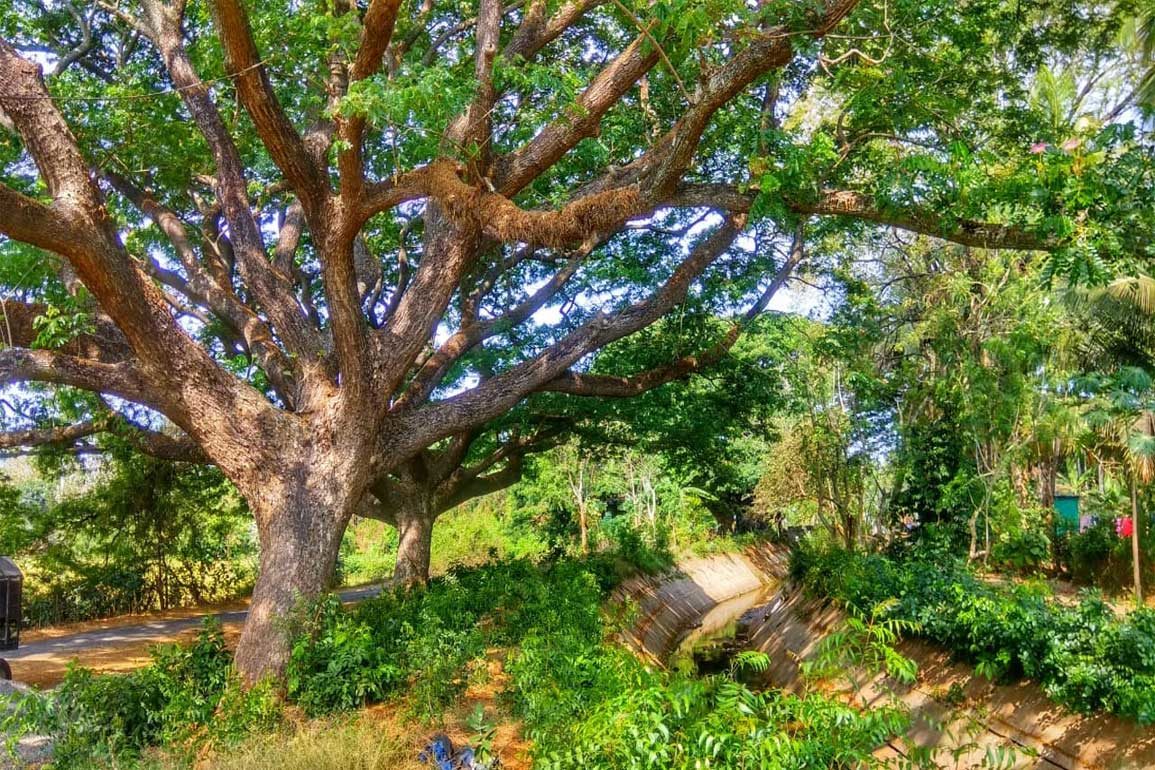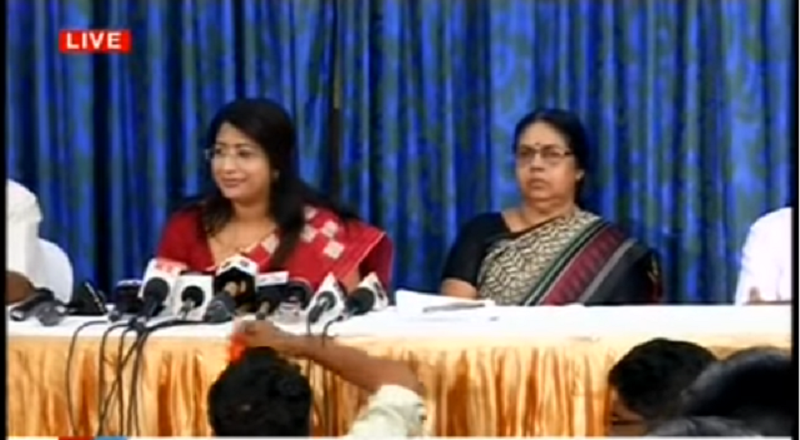The lush green landscape of Palakkad has often found mention in Malayalam literature with many renowned authors invoking it in their writings. The Arecaceae (karimbana) added flavour to novels including O V Vijayan’s The legends of Khasak but all is not well with the vegetation and the age-old trees that kept the land green.
The selfish motives of both the government and private individuals are resulting in the felling of trees on a large scale in the region. Neither studies nor Tree Committee meetings are held while felling trees. A recent instance of the irrigation department cutting down trees with the permission of the forest department created panic among tree lovers in the area.
The Social Forestry Divison, Palakkad granted permission to cut as many as 243 trees in three irrigation subdivisions to Assistant Executive Engineer, Irrigation Subdivision No II Chittur. This includes 141 trees on the sides of Moolathara High-Level Canal to Edathukara Canal, 60 trees from Turisumokku to Pallassana and 42 trees from Chitturpuzha Aarampadam Branch Canal to Pallassana.
However, the Assistant Executive Engineer’s reply to crucial questions regarding the felling of trees in an RTI filed by activist Baiju B remains unanswered. In the RTI reply, the irrigation department says that they were given permission to cut at least 290 trees. The questions regarding the Taluk Tree Committee meeting, committee meeting’s participants, instructions and order from the government and the distance of the trees from the canal remained unanswered saying ‘No information available’. As many as 88 trees have been cut till date in three subdivisions. The total revenue to the government from the cutting of the trees is Rs.10,48,332.
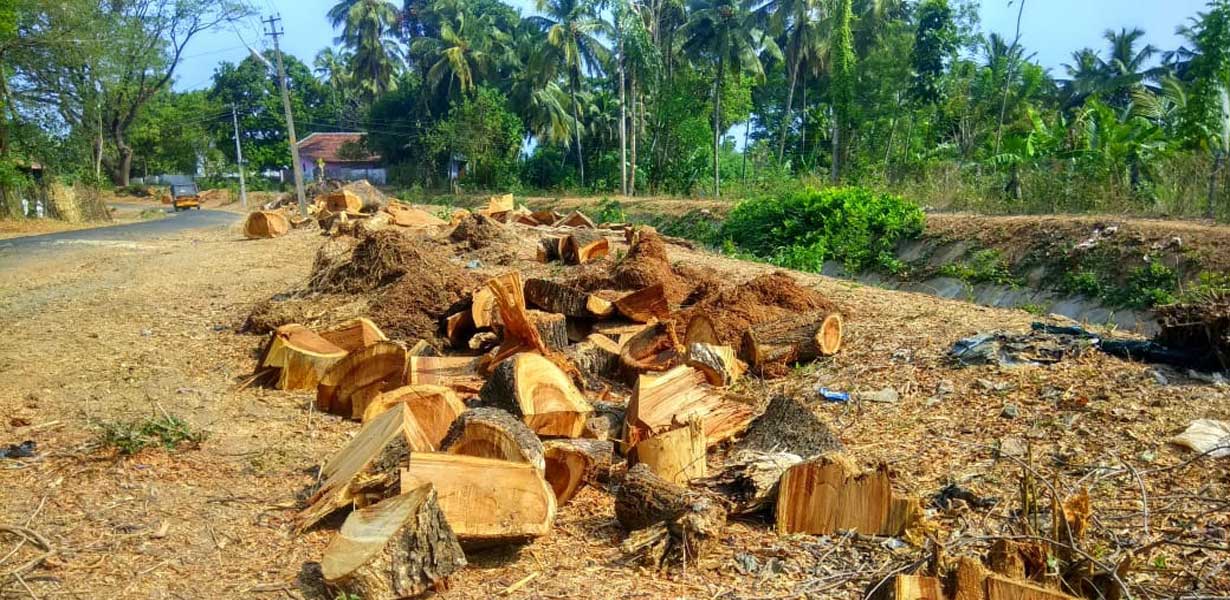
“I’ve grown up seeing these trees providing shelter to a lot of living organisms since my childhood. It is beneath these trees I spent my evenings playing games after school. These trees provided shade to commuters and it was a platform for small social gatherings,” said Baiju. He is among the several activists from the area who have raised concerns regarding the cutting of trees.
The same irrigation department which sought permission to cut trees saying they are hazardous to commuters, electric lines, public property and canal bund has planted a few saplings in the same place as part of afforestation, in a ceremony inaugurated by a minister from the ruling party. If the irrigation department thinks trees are harmful to the bunds, then what was the need to plant the saplings at the same place by utilizing government funds, Baiju asks.
According to Guruvayoorappan S, an environmental activist, “On one hand, the Government is putting in lots of efforts to plant trees for a better tomorrow and on the other, the same government cuts down trees without following rules and regulations. Most of the trees being cut are over 100 years old. The department permitted cutting of these trees without conducting proper studies,” said Guruvayoorappan.
The trees that have been given permission to be felled include Portia, Spanish Cherry, Neem, Jack fruit tree, Mango tree and Monkeypod tree. According to Guruvayoorappan, most of the trees in the list are taproots and they do not possess any threat to the bund. “Instead of damaging the bund, most of the trees in the list hold the bund together. No study has been conducted here to understand the nature of the trees or the harm caused by them to the bund. The only criterion being followed for granting permission to cut trees is closeness of the trees to the bund and electric lines,” he added.
Citing the illegal practice, Guruvayoorappan said the tree-cutting norms followed in India dates back to the colonial era. Only the type of tree and the girth is given importance while estimating its value; rather a carbon credit system must be implemented. The existing rule regarding planting 10 saplings while cutting a tree also remain on papers.
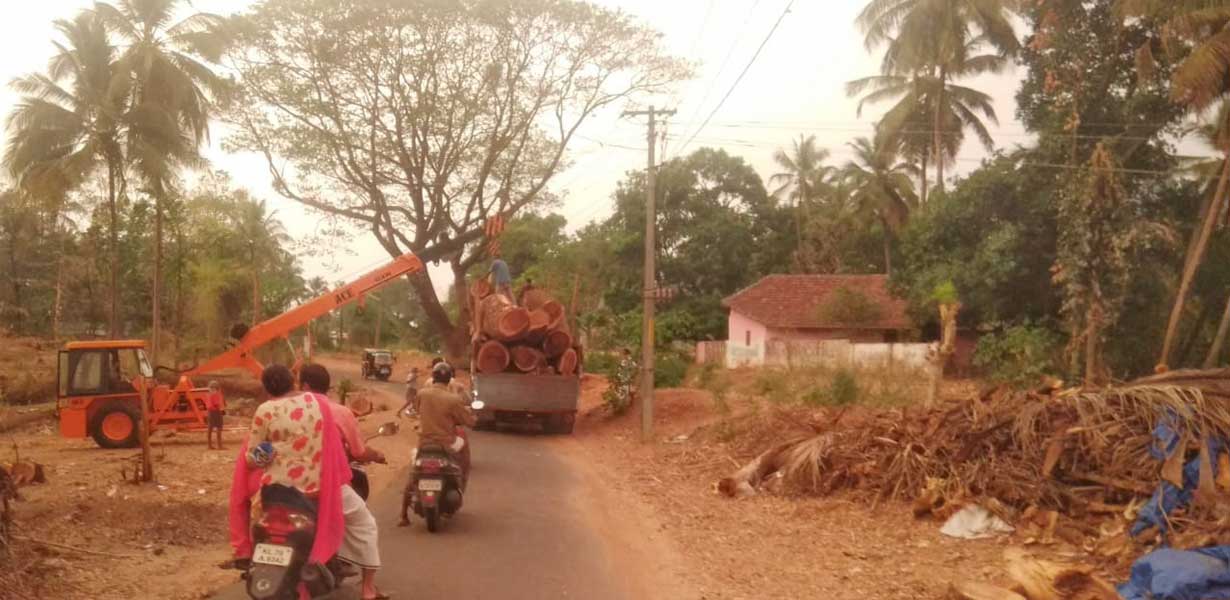
Sharing an interesting fact, activist and social worker Abhi Kumar said, “There are several places where trees are outgrown inside the bund and they are not being cut—instead, those that are not harmful to the bund but helpful in providing shelter and shade are being felled.”
Projecting the anomalies, Baiju Mangode said, “We filed an RTI with the forest department to get to know more on the trees that are being cut. The reply from the department included the list of trees, reasons and girth. The actual girth of the tree and the girth mentioned in the RTI reply were vastly different when we measured the trees marked with same number.” The activists’ group here have already filed a complaint regarding this to the forest vigilance.





